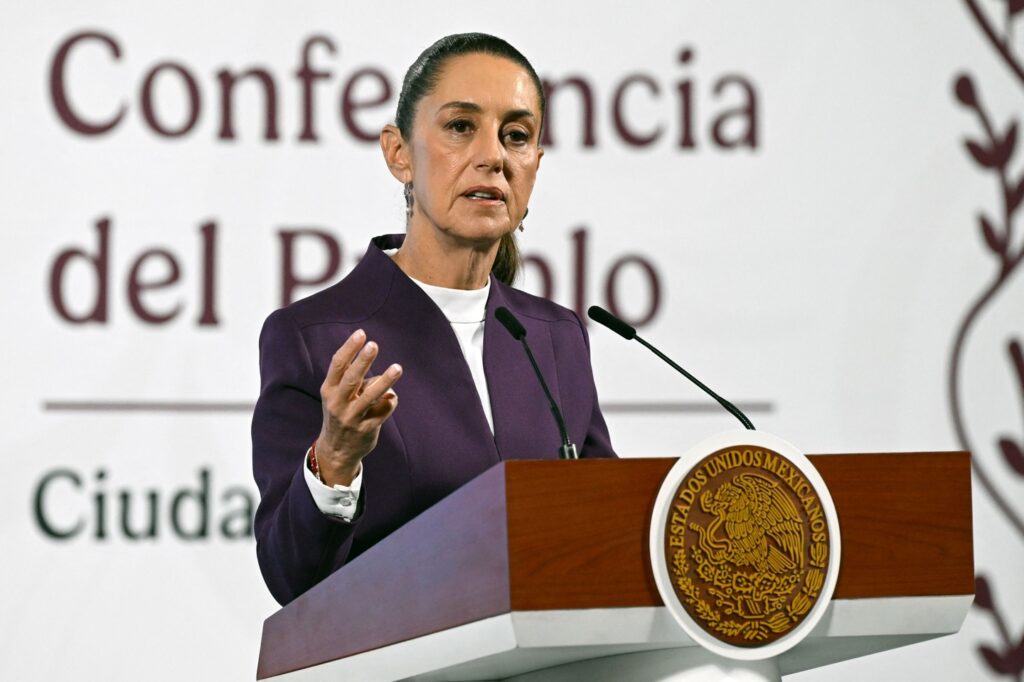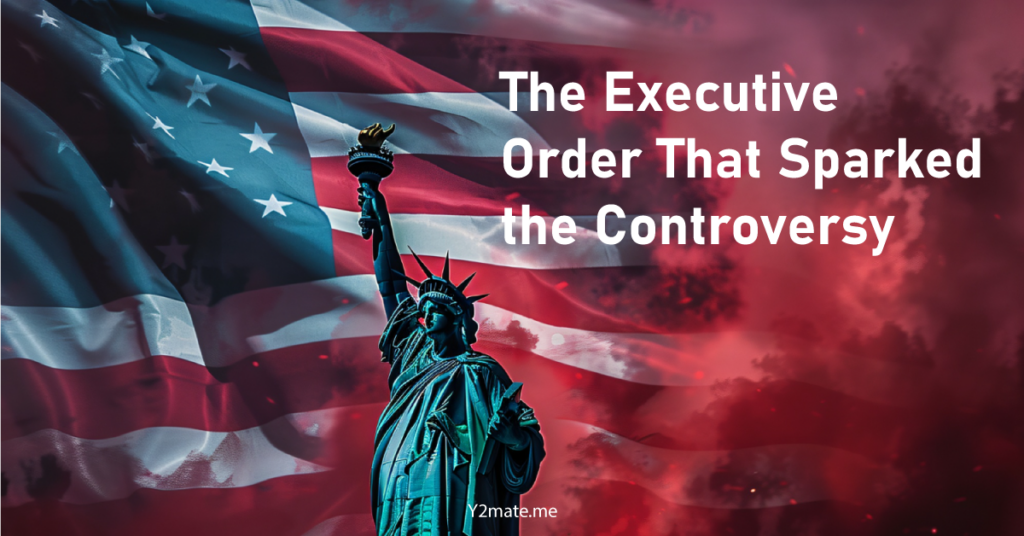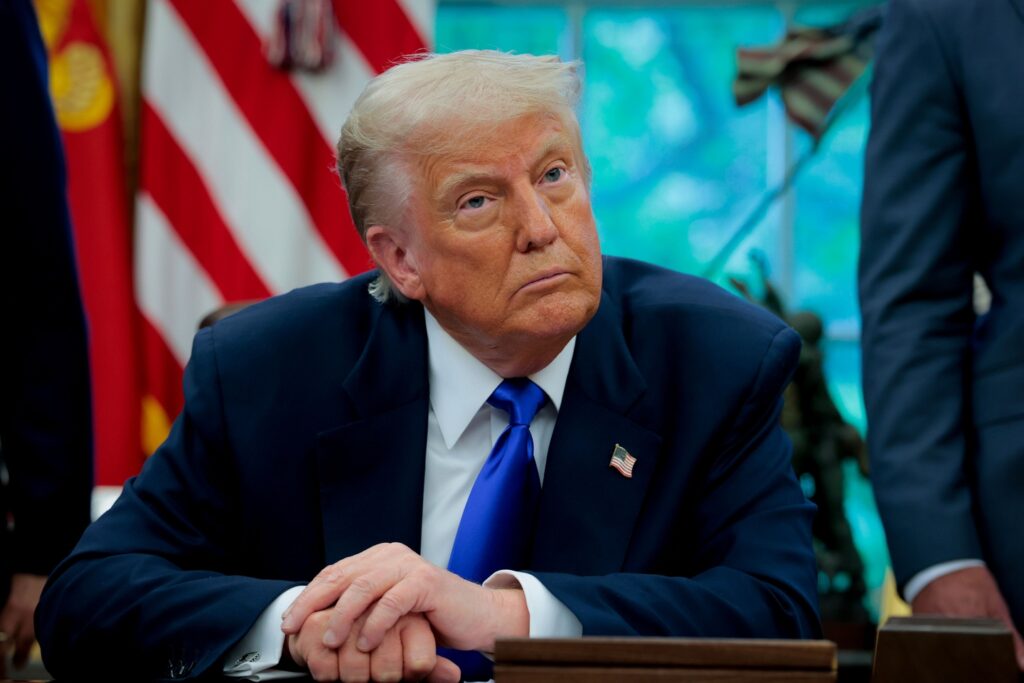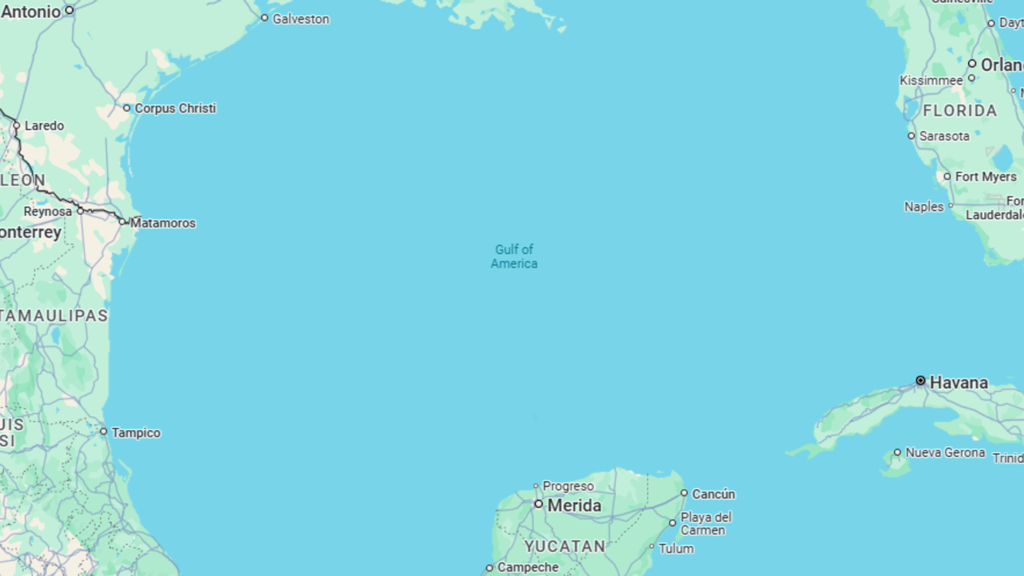Blog
Mexico Takes on Google Over ‘Gulf of America’ Map Rename

The ongoing dispute surrounding the naming of the Gulf of Mexico has recently taken a new turn, evolving from political controversy into a formal legal confrontation. Mexico has announced that it has filed a lawsuit against Google, the global tech giant, following its decision to update the name of this significant body of water on Google Maps.
This change reflects a controversial directive by former U.S. President Donald Trump, who issued an executive order renaming the Gulf of Mexico as the “Gulf of America.” The legal action taken by Mexico highlights not only diplomatic tensions between the two countries but also raises important questions about the influence and responsibilities of digital platforms in international affairs.
The Executive Order That Sparked the Controversy

The dispute can be traced back to early in Donald Trump’s second presidential term, when he signed an executive order mandating that all U.S. government maps and official documents refer to the Gulf of Mexico as the “Gulf of America.”
This unilateral move was part of Trump’s broader agenda to emphasize American sovereignty and reshape geographic narratives according to U.S. national interests. Although seemingly a minor name change, the directive immediately sparked backlash, both domestically and internationally.
The Gulf of Mexico is not just a geographical feature; it is a shared marine environment bordered by the United States, Mexico, and Cuba, among other nations. Renaming it unilaterally raised diplomatic eyebrows because such a significant international body of water traditionally carries a name that reflects its regional and historical context, not just one country’s perspective.
It is crucial to note that Trump’s executive order only holds legal weight within the borders of the United States. It directs U.S. federal agencies and affiliated organizations to use the new designation in their official materials.
However, the order does not—and cannot—bind other countries, including Mexico, to adopt the same terminology. This distinction underscores why Mexico’s government has rejected the renaming and why the issue has escalated into an international dispute.
Mexico’s Firm Response: Legal Action Against Google
Mexico’s president, Claudia Sheinbaum, has been vocal in opposing this name change. On May 9, she announced that her administration is taking the matter to court by filing a lawsuit against Google. The lawsuit arises from Google’s decision to implement the name “Gulf of America” on its mapping service, at least for users accessing Google Maps within the United States. This decision was made shortly after Trump’s executive order, despite Mexico’s repeated appeals to Google to maintain the traditional and internationally recognized name.
President Sheinbaum condemned the unilateral renaming, describing it as an affront to Mexican sovereignty and a disregard for international norms. While she did not provide specific details about the lawsuit’s filing location or timeline, she emphasized that the goal is to ensure that the U.S. government’s decree is respected only within its appropriate jurisdiction, rather than being imposed globally or on the entire Gulf region.
This lawsuit against Google is significant because it marks one of the rare occasions where a nation is taking legal action against a major tech company for the handling of geographic names on a digital platform. It raises broader questions about the role and accountability of multinational technology companies in geopolitical disputes.
Google’s Position and Approach to the Controversy
Google, for its part, has not released a formal public response since the announcement of the lawsuit. However, leaked documents and correspondence shared by Mexican officials provide insight into the company’s stance. Cris Turner, a senior Google executive responsible for government affairs and public policy, reportedly communicated to President Sheinbaum that Google’s map labeling policies aim to be “neutral and consistent” worldwide, reflecting local usage and official designations where applicable.
Interestingly, Google employs a location-based approach to displaying the Gulf’s name on its maps. Users in Mexico continue to see “Gulf of Mexico,” preserving the traditional designation. Meanwhile, U.S. users see “Gulf of America,” in line with the executive order. For users elsewhere in the world, Google displays a combined label: “The Gulf of Mexico (Gulf of America).” This nuanced approach attempts to balance competing interests but has not prevented political backlash.
This approach reflects the broader challenge tech platforms face: navigating diverse and sometimes conflicting political realities while maintaining a global product that respects local laws and sensibilities. Google’s decision to implement dual naming is an attempt at compromise, but the lawsuit indicates that such measures might not suffice when national sovereignty is perceived to be at stake.
The Diplomatic Fallout and Broader Political Context

The renaming controversy is more than a simple semantic disagreement—it exposes deeper tensions in U.S.-Mexico relations and touches on sensitive issues of national pride, sovereignty, and territorial rights. Mexico has historically maintained strong cultural and legal claims to the Gulf of Mexico, which plays a vital role in the nation’s economy, environment, and identity.
Mexico’s foreign affairs department made formal requests to Google to reconsider its decision, emphasizing respect for international geographic conventions. Despite these diplomatic efforts, Google’s refusal to revert the change led to the current legal escalation.
Within the U.S., the controversy has also reached the political arena. The U.S. House of Representatives recently passed a bill intended to codify the “Gulf of America” name into law, requiring federal agencies to update maps and official documents accordingly. While this bill enjoyed near-unanimous support from Republican lawmakers, it faces significant opposition in the Senate, where it is unlikely to secure the 60 votes required to overcome a filibuster. Thus, the legislative fate of the new name remains uncertain.
This legislative development signals that the naming dispute has gained traction beyond an executive order and entered the realm of formal U.S. lawmaking, further complicating prospects for a diplomatic resolution.
Media and Public Reactions
The naming controversy has also influenced media dynamics. Notably, the Associated Press reportedly lost White House press access after it refused to update its style guide to adopt the new Gulf name. This incident highlights how deeply the renaming debate has permeated institutional practices and underscored the politicization of geographic terminology.
Public reaction, particularly in Mexico, has included a mixture of humor and frustration. President Sheinbaum herself responded to the controversy with sarcasm, suggesting that if the U.S. could rename the Gulf, Mexico might reciprocate by renaming the United States as “América Mexicana” or “Mexican America.” She referenced an 1814 historical document where the term “América Mexicana” was once used, blending historical fact with a pointed political jab.
The name change also sparked a flurry of memes and social media posts mocking the move, emphasizing the symbolic and cultural dimensions of the dispute beyond mere cartographic concerns.
Legal and Geopolitical Implications of the Lawsuit
Mexico’s lawsuit against Google brings into sharp relief the growing influence and responsibility of technology companies in matters traditionally handled by governments. Digital mapping platforms have enormous power to shape public perception of geography, borders, and place names. When such platforms adopt politically charged labels, they effectively participate in international disputes.
The legal battle will likely center on whether Google has violated any international agreements, acted against Mexican sovereignty, or failed to respect established geographic naming conventions. It also raises questions about jurisdiction in cyberspace: how far can a country extend its naming authority, and what obligations do private companies have when operating globally?
The outcome of this case could establish important precedents for how tech companies navigate similar territorial controversies in the future. It may also prompt the development of clearer international standards or frameworks governing digital map labeling.
Historical and Geographic Significance of the Gulf

The Gulf of Mexico has been known by this name for centuries, reflecting its historical, cultural, and environmental importance to the countries that border it. It serves as a critical maritime passage, a hub for fisheries, and a vital source of oil and gas reserves. The Gulf’s name embodies shared regional heritage and cooperation.
International agreements from the 1970s, including detailed boundary treaties between the U.S. and Mexico, formalized maritime limits and underscored the Gulf’s status as a shared space. Changing the name without multilateral consent challenges these longstanding understandings.
The dispute over naming is thus a symbolic contest over history, identity, and control.
What Lies Ahead?
With the lawsuit officially filed, the dispute over the Gulf’s name is entering a new and uncertain phase. Google may face increased pressure to reconsider its naming policies, while Mexico will likely continue to assert its position in courts and diplomatic channels.
Internationally, the name “Gulf of Mexico” remains the standard designation in most countries, and global organizations such as the United Nations typically follow widely accepted geographic naming conventions. It remains unlikely that the “Gulf of America” name will gain broad international acceptance without multilateral agreement.
This episode highlights the expanding role of digital tools like Google Maps, which are no longer mere navigation aids but platforms that carry significant political and cultural weight. How they handle sensitive geopolitical issues will be closely watched going forward.
FAQs
Mexico is suing Google for renaming the Gulf of Mexico to ‘Gulf of America’ on Google Maps.
Google changed the name following Trump’s executive order renaming the Gulf of Mexico.
No, the new name only applies to Google Maps users in the U.S. and some global versions.
Yes, Mexico made several official requests before filing the lawsuit.
Google says the change reflects its policy to show names based on local official usage.
Currently, most countries and global organizations continue to use “Gulf of Mexico.”
The executive order is legally binding only within the United States.
The U.S. House passed a bill to codify the new name, but it faces Senate opposition.
The change sparked memes, media disputes, and sarcastic comments from Mexican officials.
It raises questions about tech companies’ roles in geopolitical conflicts and digital sovereignty.
-

 Blog3 years ago
Blog3 years ago10 Celebrities and Their Equally Gorgeous Siblings
-

 Blog3 years ago
Blog3 years agoThe highest-paid actors of all time are living large
-

 Blog3 years ago
Blog3 years agoHollywood Stars’ Instagram Photos viciously replayed
-

 Blog3 years ago
Blog3 years agoUpsetting And Creepy Facts We Wish We Could Erase From Our Memory
-

 Blog3 years ago
Blog3 years agoBecome Star Quality With These Celebrity Morning Routines
-

 Blog3 years ago
Blog3 years agoSome of Hollywood’s best-known movies have secrets that will shock you
-

 Blog3 years ago
Blog3 years agoThese Celebrity Couples Did Some Bizaree Things In The Name Of Love
-

 Blog3 years ago
Blog3 years agoUsing Everyday Items These People Made The Most Amazing DIY Creations
